The Monkey
‘The Monkey’ poker playing cards manufactured by M.C. de Casabó Ltda, Uruguay, c.1950.
‘The Monkey’ playing cards by M.C. de Casabó Ltda, c.1950
‘The Monkey’ poker playing cards manufactured by M.C. de CASABÓ Ltda, Avda Gral Rondeau 1602, Montevideo, c.1950. The court cards are a curious idiosyncratic design with indices in a smaller font size than in the numeral cards. The ace of hearts has the blue 25 centésimo tax stamp which was applied to cards manufactured in Uruguay at this time. Casabó also produced Naipes Conga, Naipes Elefante, Naipes Bambú, Naipes Tatú, Naipes King, Naipes American and Naipes Jaque►
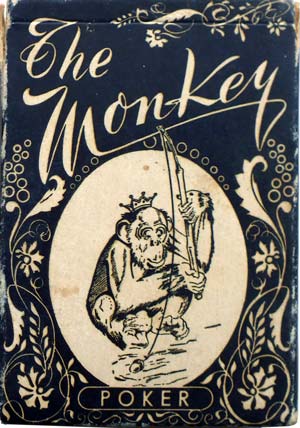
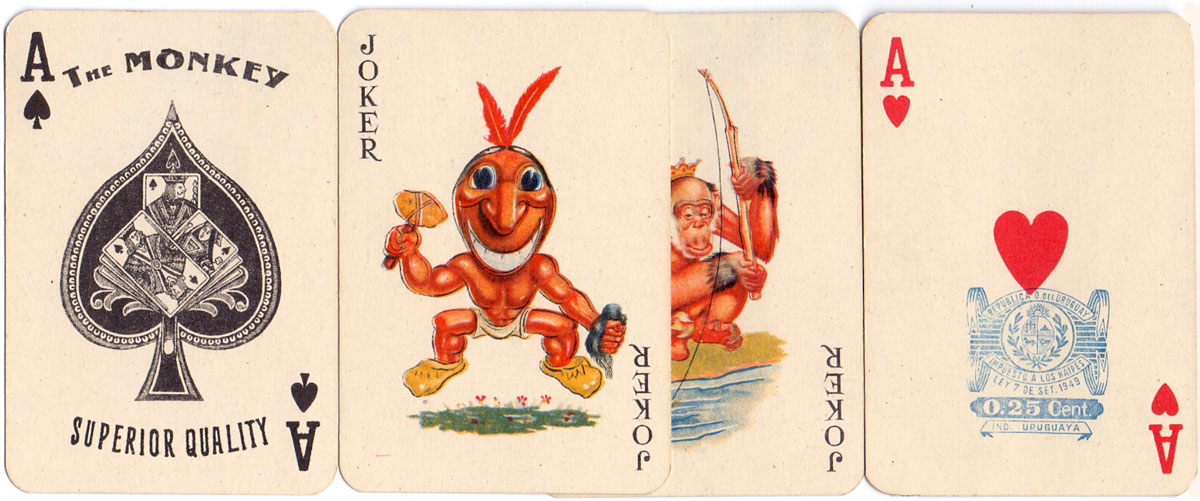
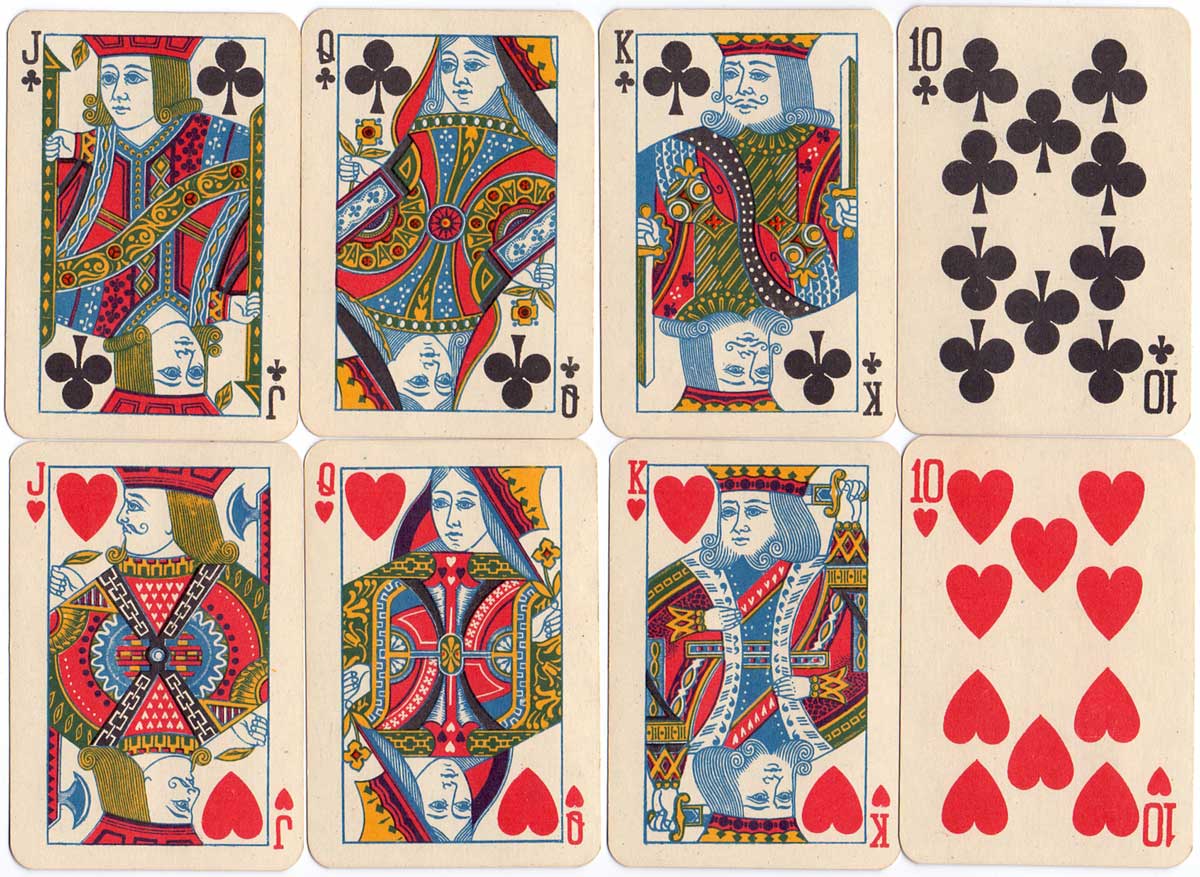
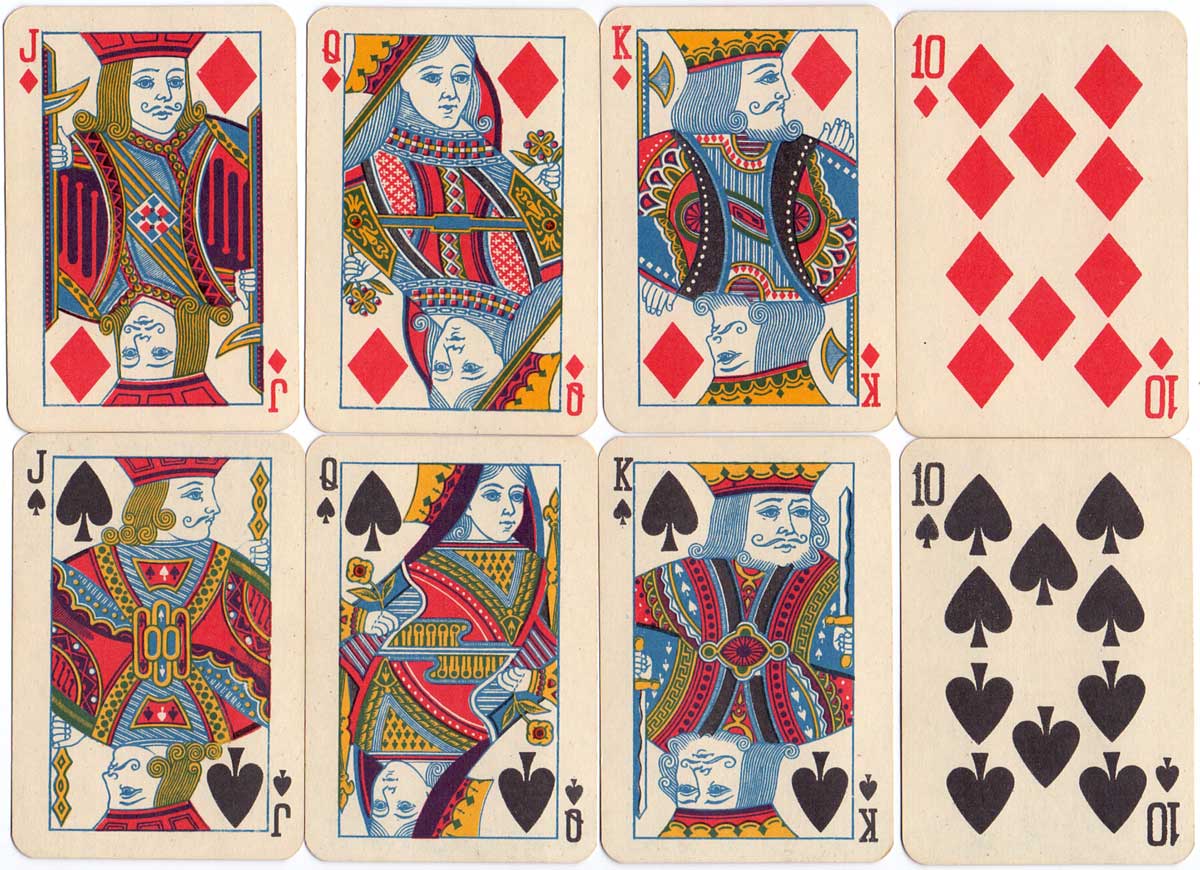
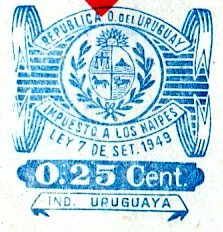
Above: in this edition the court cards have not all been turned so that the suit symbol is at the left-hand side which would make it easier to fan the cards in the hand. In later editions the courts are all turned. Two new joker designs have been added. The box gives the company name as M. C. de Casabó Ltda, and the address as Av. Gral Rondeau, 1602 (Montevideo) and a telephone number. In May 1956 the name changed to M. C. de Casabó S.A. and the address to Cuareim 1885 (Montevideo) with the same telephone number.
Right: the tax stamp on the ace of hearts→

By Simon Wintle
Member since February 01, 1996
I am the founder of The World of Playing Cards (est. 1996), a website dedicated to the history, artistry and cultural significance of playing cards and tarot. Over the years I have researched various areas of the subject, acquired and traded collections and contributed as a committee member of the IPCS and graphics editor of The Playing-Card journal. Having lived in Chile, England, Wales, and now Spain, these experiences have shaped my work and passion for playing cards. Amongst my achievements is producing a limited-edition replica of a 17th-century English pack using woodblocks and stencils—a labour of love. Today, the World of Playing Cards is a global collaborative project, with my son Adam serving as the technical driving force behind its development. His innovative efforts have helped shape the site into the thriving hub it is today. You are warmly invited to become a contributor and share your enthusiasm.
Related Articles

A New Look at the Evolution of Whist Markers and Gaming Counters
This article aims to illustrate the evolution of whist and gaming counters from the 18th century to ...

Poker Quest
Poker Quest: edition spéciale, 400e anniversaire de la ville de Quebec, Canada, c. 2008. ...

Poker Patience
Poker Patience, according to an early 20th century author, was "introduced so recently as the autumn...

The Most Popular Card Games in Casinos
The Most Popular Card Games in Casinos by Katelyn Oakley.

Diaoyu Poker 8068
8068 by Diaoyu Poker (China) 2019.

Hanky-Panky
Hanky-Panky poker card game, California, c.1975.

Parisian style Spanish deck by Grimaud
Parisian style Spanish deck by Grimaud for export to Uruguay.

Naipes ‘La Criolla’ by Anabella Corsi
Inspired by an archaic Spanish pattern formerly used in Spain during the 16th and 17th centuries.

Naipes ‘Charabon’
Naipes ‘Charabon’ - depicting the Gaucho as a national hero, Montevideo, 1983.

Naipes Artiguistas, 1816
Naipes Artiguistas published in Concepción del Uruguay, Entre Rios province (Argentina) in 1816, by ...

Playing Cards designed by Alvaros
Playing Cards designed by Alvaros, published by Eduardo Carrión, Montevideo, 2000

Club Nacional de Football, Uruguay
100th anniversary of the Club Nacional de Football, Uruguay, 1999.

The Traveler’s Companion
The “Traveler’s Companion”, Union Playing Card Co., New York, c.1886.

Poker Nº 505
Heraclio Fournier ‘Poker Nº 505’ for export to Argentina with elaborate peacock joker, c.1960.

Head-to-Head Poker
“Head-to-Head” Poker by Parker Brothers (Hasbro), 2005

Canasta
Canasta is a card game of the Rummy family which originated in Uruguay probably about 1947.
Most Popular
Our top articles from the past 28 days

